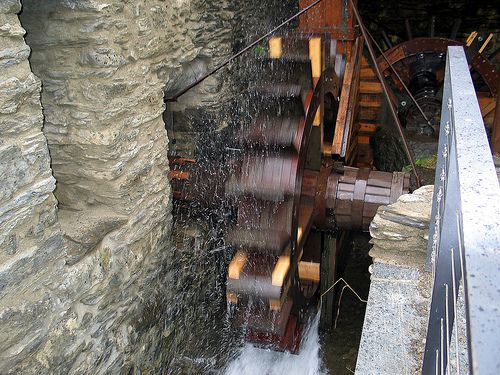-
 Soma
Soma
-
 Malate
Malate
-
 DVD-Ram
DVD-Ram
-
 Gauge theory
Gauge theory
-
 Eukaryote
Eukaryote
-
 Gruiformes
Gruiformes
-
 Gangue
Gangue
-
 Scots pine
Scots pine
-
 Allosteric site
Allosteric site
-
 Dielectric
Dielectric
-
 Permanent virtual circuit
Permanent virtual circuit
-
 LBCO
LBCO
-
 Screening
Screening
-
 Higgs boson
Higgs boson
-
 Kelvin
Kelvin
-
 Surge
Surge
-
 Networking
Networking
-
 Cross-certification
Cross-certification
-
 Anatexy
Anatexy
-
 Stolon
Stolon
-
 WYSIWYG
WYSIWYG
-
 LINAC
LINAC
-
 Pathogenicity
Pathogenicity
-
 MIDI
MIDI
-
 Vector
Vector
-
 Perfluorinated compound
Perfluorinated compound
-
 Lung
Lung
-
 Mandrake
Mandrake
-
 Mandible
Mandible
-
 Palomares nuclear incident
Palomares nuclear incident
Hydraulic energy
Hydraulic energy is a renewable energy that releases a very low amount of greenhouse gas. This source ofrenewable energy uses the movements of water put into motion by the sun and gravity, the water cycle, tides and sea currents.
Whether using natural or artificial waterfalls (such as natural waterfalls or hydroelectric dams), the flow of water courses or sea currents (tides, thermohaline circulation...), hydraulic plants produce mechanical energy that is usually converted into electricity (hydroelectricity).
Since ancient times water mills have used this energy to pump water, grind grain or even operate hammers. Their modern descendants hydroelectric plants, provide renewable electricity while producing very little greenhouse gas (except in tropical regions, where the deterioration of organic matter produces methane).
However, the use of hydraulic energy has some disadvantages, especially in terms of the continuity of water courses. Indeed, the creation of a dam is an obstacle for navigation, the migration of aquatic species and the transfer of sediment.
 The wheel of this mill provided energy for the Farga Rossell ironworks (Andorra) during the second half of the 19th century. © Raymond355 CC by 2.0
The wheel of this mill provided energy for the Farga Rossell ironworks (Andorra) during the second half of the 19th century. © Raymond355 CC by 2.0
Latest
Fill out my online form.



